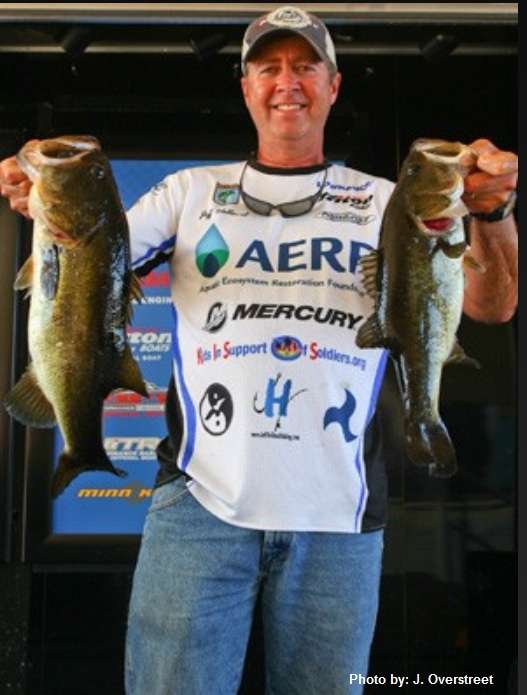
When the Bassmaster Southern Open anglers visit Florida for the first tournament of 2017, they should expect to encounter a wide variety of tall native and exotic plants growing on the Harris Chain of Lakes.
The three most common aquatic plants that extend high out of the water include cattails (Typha sp.), bulrush, (Scirpus sp.) and reeds (Phragmites sp.).
My first recommendation to understanding these three plants is for anglers to understand the importance of visual observation. Learning to identify plant species is easy to master, but learning to truly “observe” how the plants grow along a shoreline takes practice. Here are a few tips:
A key feature to look for when observing a group of plants is to locate the section of oldest plants. The mature plants established first and grew in preferred sediment, much like big bass take up home in the best pieces of cover. Another key is becoming accomplished at distinguishing between cattails, bulrush, and reeds. Having an understanding of plant species will give anglers an understanding of the lake bottom.
Cattails (Typha)
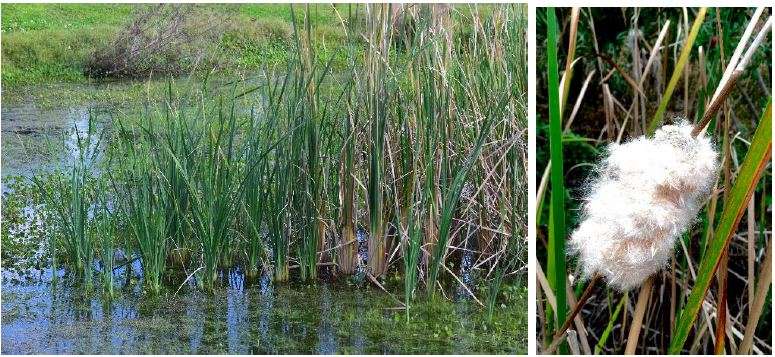
Cattails are undoubtedly the most recognized species of tall aquatic plants due to their hotdog shaped seed heads and flat leaves. They stand up to six feet tall out of the water and prefer to grow in shallow water less than four feet deep. The cattail leaf is very high in cellulose, a fiber that does not breakdown easily and makes this plant useful as habitat for wildlife nesting. The fibrous material is also a deterrent against insects wanting to take a bite out of the leaf.
Cattails are invasive and spread easily. Plants initially grow where wind-blown seeds land on exposed lake bottom during low water. Older plants reveal the initial establishment area and often the most optimal growing conditions of organic-rich sediments. These rich sediments are common foraging areas for freshwater shrimp and crayfish, preferred food for bass, bluegill, and crappie.
With roots growing in softer organic bottom, cattails do not grow well in wave beaten areas. Presence of cattail stands often indicates a shoal, or a stable, calm area on a lake with nutrient-rich sediments.
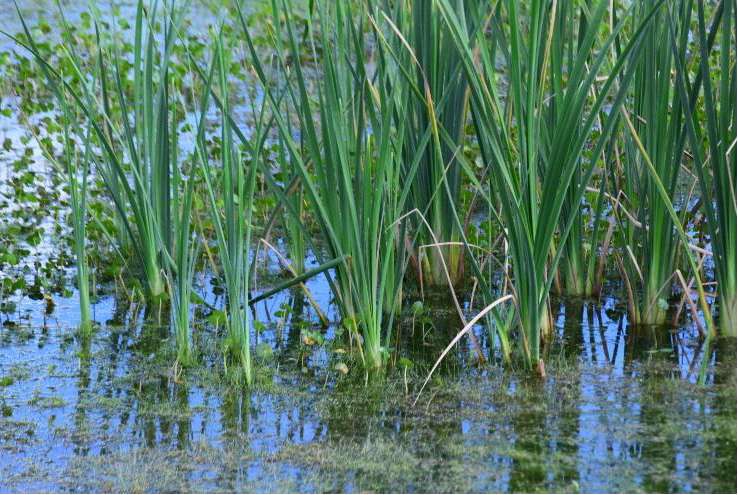
The pattern of cattail grow causes tight crevices between each leaf that easily catches fishing line. Anglers often get frustrated when they make a perfect cast next to cattails only to have the wind blow their line over a single leaf and get caught. Next time you want to get a lure unstuck from a cattail leaf, try a slow, steady pull on the line to allow the hook to split the cattail leaf rather than bend the leaf. You’ll be surprised how well this technique works.
Bulrush “Tules” (Scirpus)
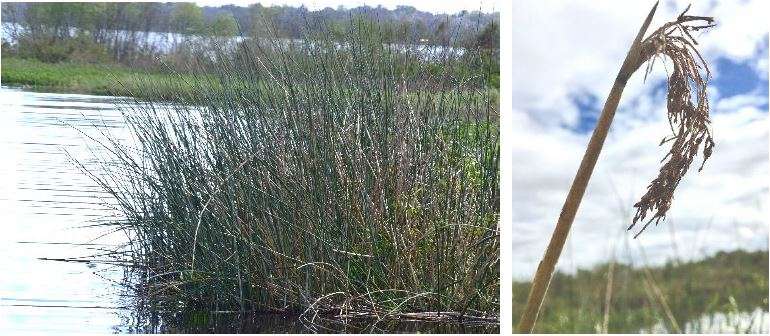
Bulrush, also called “Tules”, exhibit rounded leaves, stand out of the water three to six feet tall, and survive in water equally deep. The bulrush leaf lacks heavy fiber and is eaten as a stable food source by many aquatic insects. This group of plants has a strong root system to tap into nutrients buried under sandy sediments. It is this root system which allows bulrush to grow so well in sandy, wave beaten areas. Anglers can easily recognized bulrush by its seed heads that protrude as a cluster near the pointed leaf-tip.
Observing where bulrush grows on a lake can be useful in quickly determining where active, wave and current areas are located. As a general rule, if a patch of bulrush is surrounded by bare sand, this indicates the area receives heavy current or wave action. In the absence of waves or current, it should only take a few months for other aquatic plants to grow within bulrush.
Another reason a bulrush stand may lack nearby plants is when the stand was newly planted by an agency or homeowner. Bulrush are commonly used in aquascaping throughout the nation to establish new plant communities in hard-to-grow areas, or as a replacement habitat in cattail removal projects. The Florida Fish and Wildlife Conservation Commission (myFWC.com) and St John River Water Management District (SJRWMD.gov) planted acres of bulrush on the Harris Chain of Lakes for fish habitat and wildlife value.

Reeds (Phragmites)
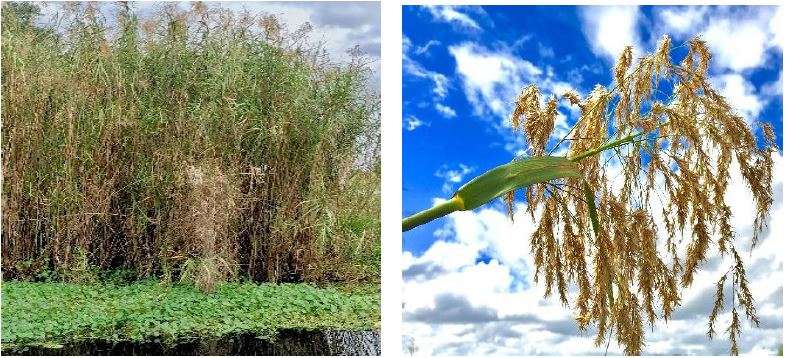
Reeds are the tallest species of aquatic plants that anglers are likely to fish, with heights often reaching 10 feet. The presence of this plant group indicates stagnant, silted areas rich with mucky soils. Reeds have hollow, semi-woody stems with recognizable feather-like seed heads. Plants grow in tightly formed clumps which establish by a combination of wind-blown seeds and roots. Rooted plants commonly expand out on flooded bays and muck bottoms.
When reeds are established along river banks, anglers can use their location to signal the stable highwater mark and floodplain boundary.
As a rule, reeds are excellent indicators of saltwater intrusion boundaries in tidal river systems as they grow in a gradient according to their salt tolerance. Unfortunately, non-native species are spreading in the U.S. and now there are exceptions to this rule.
Final Thoughts
One of the basic principles of successful fishing is learning how to find where fish live. There are few established rules in nature, but general tendencies can be honed through observation. For example: cattails are often found growing on organic, nutrient-rich shoals; bulrush survive the best in sandy, current driven areas; and the tallest reeds like to grow in stagnant and mucky shallow bays.
Jeff Holland is sponsored by the Aquatic Ecosystem Restoration Foundation, a national foundation dedicated to researching control of invasive aquatic plants and preserving our nation’s aquatic ecosystems. AERF partners with the B.A.S.S. Nation through an annual grant that supports aquatic plant management and fish habitat enhancement projects.

